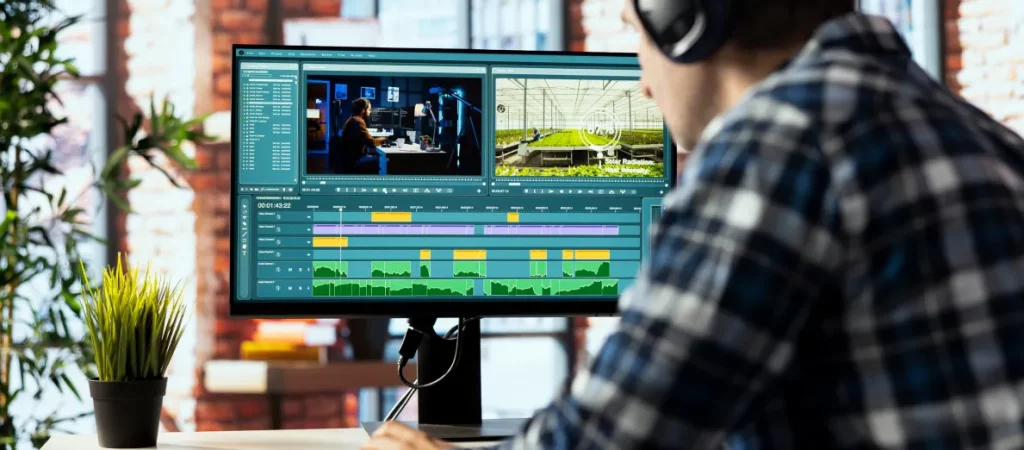Creating content is to make it accessible for everyone to consume. It is difficult for deaf and hard-of-hearing viewers to fully immerse in any conversation or content. Adding captions to any content is the first step to making content accessible to everyone.
Captions are generated and added to videos based on the purpose of their existence. Captions can either be live captions or post-production captions created to serve specific audiences. We will elaborate on both of them and check out the key factors that differentiate them.
What are live or real-time captions?
Described and Captioned Media Program (DCMP) defines real-time captions as captions that are generated and displayed at the time of program origination. Real-time captions are often displayed on black background with white letters. Real-time captions are also known as live captions were started by National Captioning Institute in 1982.
Captions in the real-time captioning process are generated simultaneously and transmitted at the time of the origination of the video. Specially trained captioners work to generate real-time or live captions.
Real-time captions are used for events where generating offline captions is not possible. “Events” where live or real-time captioning is used include lectures or presentations, council meetings, seminars, live sporting events, news broadcasts, or any other event that can be identified as live.
Real-time or live captioning is handled by highly skilled personnel who adhere to stringent industry standards, like Digital Nirvana. These professionals ensure captioning accuracy of a minimum of 98% however, there could be occasional errors owing to unfamiliar words, bad audio quality, and errors in the software dictionary.
Real-time or live captions can also be produced remotely and then transmitted to a site where the program is taking place. For example, in a live event, the speaker might be on the stage and the captioner is working from a different city. The remote real-time captioner would use the same equipment as the other captioners and transmit the captions over the internet, using special software, to the listeners’ laptop or the event screen.
What is post-production or offline captions?
In simple terms, post-production captions are added to a video after it is recorded. The insatiable demand for content from viewers has propelled the growth of online video content. As the demand for video content grows, so does the need for post-production captioning.
Post-production or offline captions are producing captions for any recorded program so that, at the time of airing, the captions are part of the video. There are many types of offline captions –
Offline caption files come in multiple formats -.SRT, .SCC, VTT, and others. These caption files are time-coded with the start and stop times of the text displayed within the video. Offline or post-production captions should be –
- 99% accurate
- Synchronized with the audio
- Readable
- Positioned on the screen without blocking any vital information
What are the main differentiating factors between live captions and offline captions?
Timing – Live captions are often displayed with a slight delay. The main reason for this delay is that captioning here is a human process. The captioner needs to listen to the content first, then type the words, which would then be processed by software. Offline captions, on the other hand, are required to be synchronized and they cannot be delayed. They are presented on the screen in one or two short lines with logical grammatical breaks.
Accuracy – Live captions are expected to have a minimum of 98% accuracy, and it is also expected to contain a few errors here and there. The accuracy is compromised in live captions because of unusual names, advanced vocabulary, and words that are pronounced similarly but have different meanings, for example, their and there – these two words have the same pronunciation but different meanings. Offline captions are expected to have 100% accuracy with no errors and the industry benchmark is 99% accuracy.
To know more about captioning best practices and which captioning is best suited for your requirements, write to us at marketing@digital-nirvana.com.




